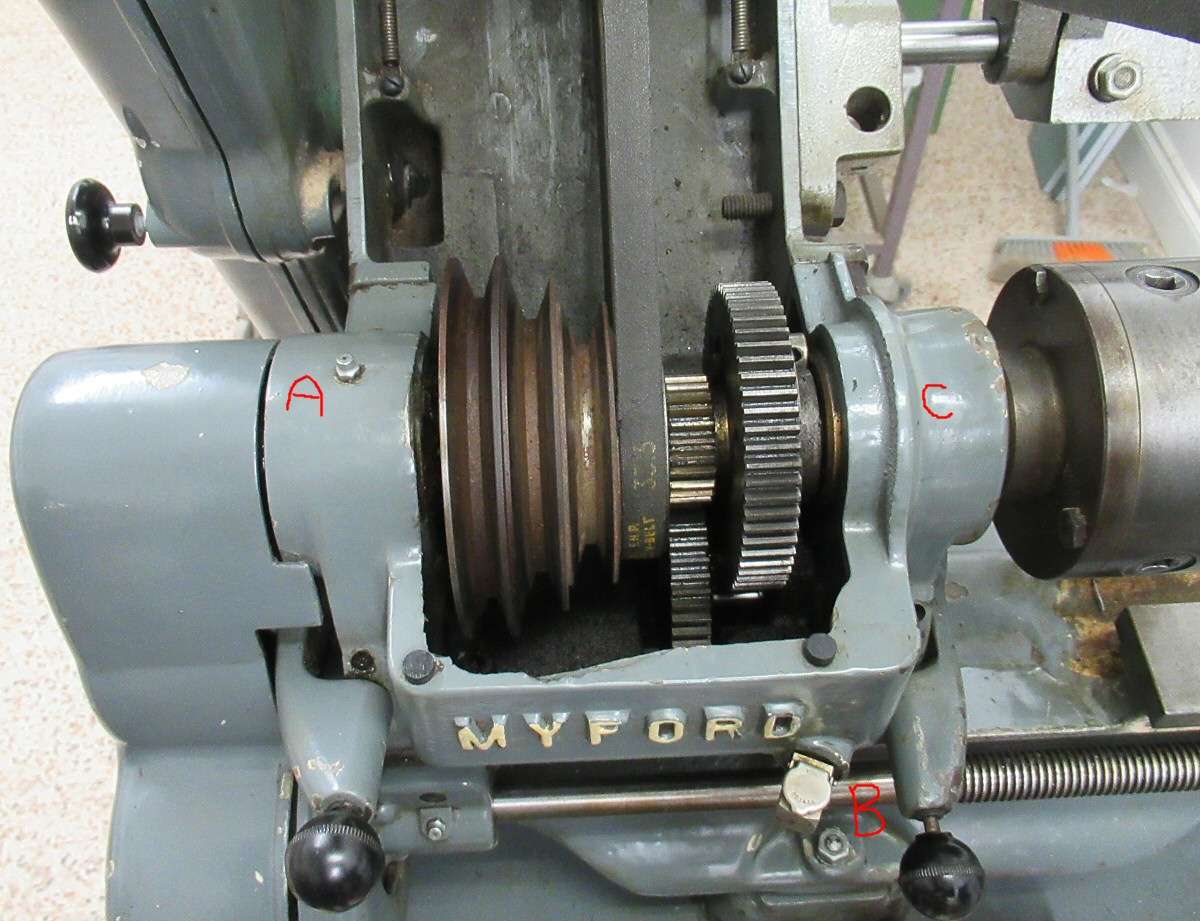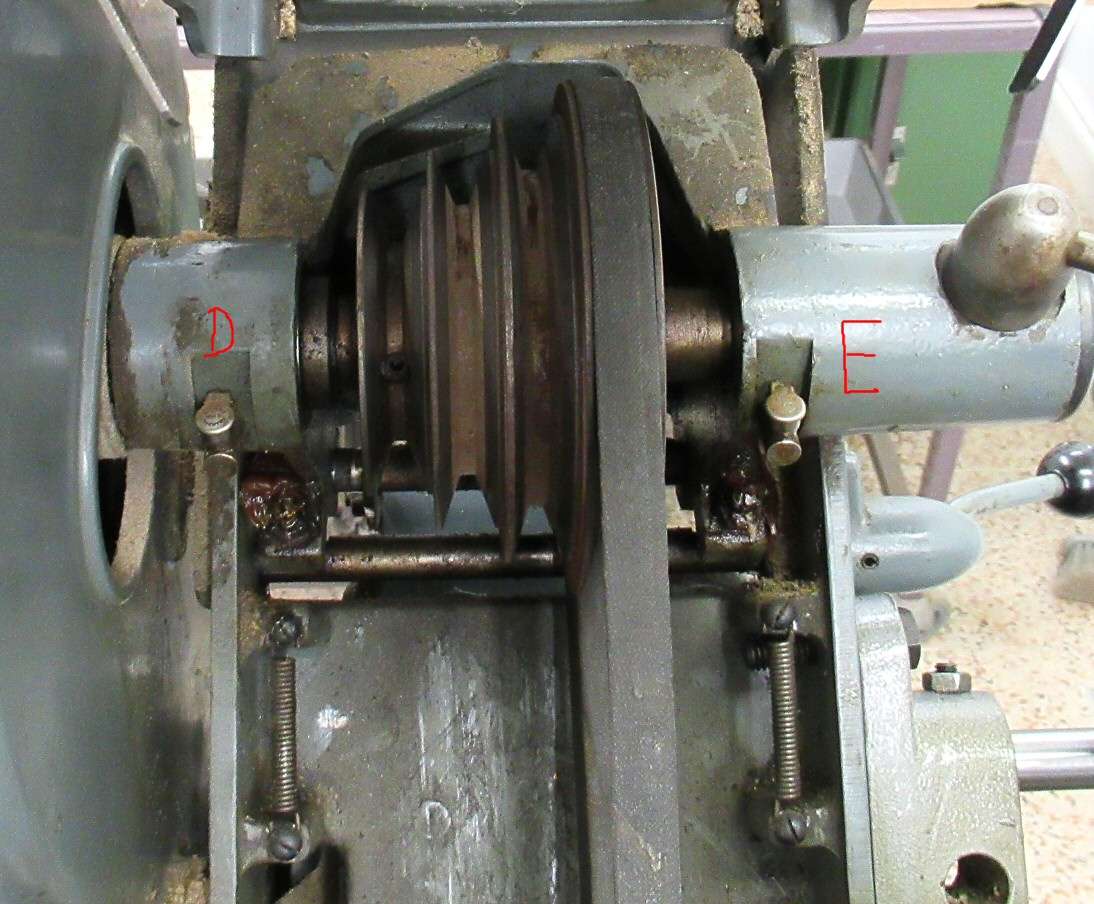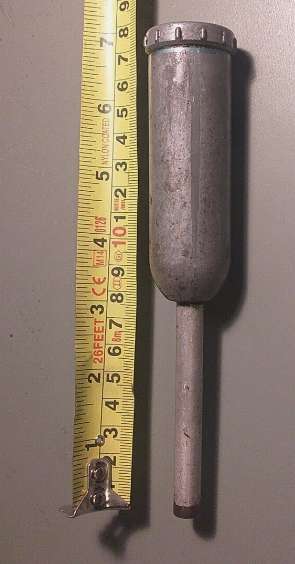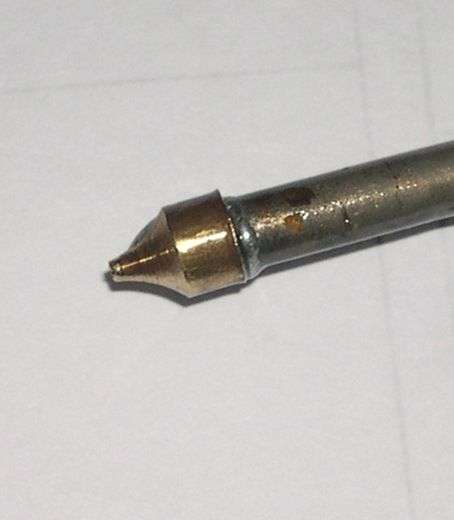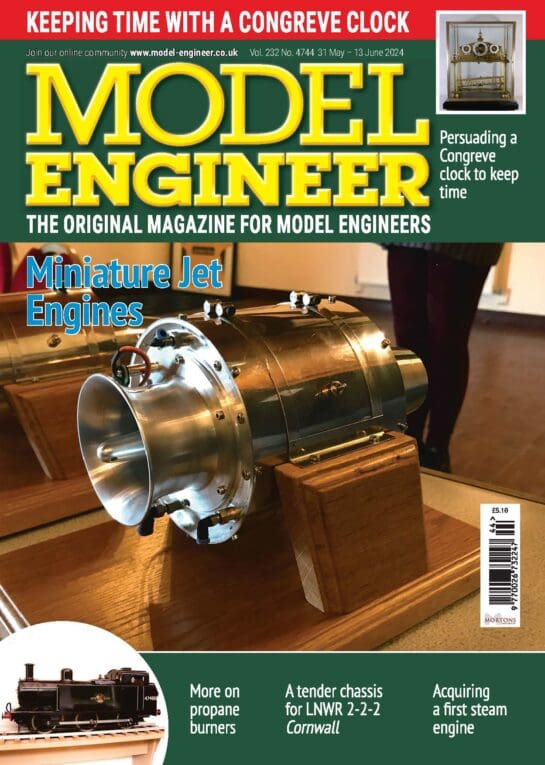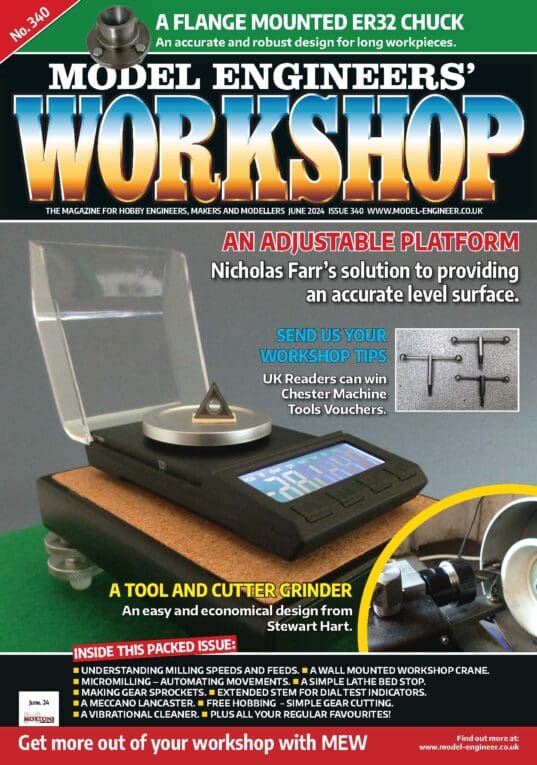By ‘total loss’ system, do you mead what goes in will come out?
Yes – hence my reference to my “Beeston Oil Leak” ! In my epxerience, Myford S7s are oily machines – maybe I go overboard, but I don’t get through huge quantities of oil. All the oil you apply to this machine will eventually end up in the coolant / swarf tray.
So I should see some emerge from the bearing ?
Not necessarily. If you could see some oil coming out whilst running, it will probably be inside the headstock at the rear of the bearing – from memory oil moves through a tapered bearing from the large end to the small end. Bear in mind that the felt wick is smaller than you might expect. I knew I had a new spare wick somewhere & found it whilst in the garage just now. It is only around 1/4″ diameter at the end that contacts the spindle (around 3/16″ diameter in the section that sits inside the contact spring) & the oil flows by a wicking action through the dense felt. You will not (and should not) see large quantities of oil emerging from anywhere after the short runs you are doing. This is what the wick looks like as a spare part
not sure exactly where you meant by “headstock area / top of the raising block”
The area underneath the bed beneath the headstock casting, where the bed casting sits on the raising block that sits on the coolant / swarf tray – where you would reasonably expect that oil would drip out from the vicinity of the front spindle bearing.The headstock casting is open where it bolts to the bed & the bed is also hollow / open, so any oil that esacpes within the headstock area works its way out there.
I have my stand & coolant tray angled sllightly towards the headstock end so that coolant (if I used it) would tend to flow towards the coolant outlet at that end of the tray – the lathe sits level on the raising blocks. Used oil (know as “tramp oil” in industry) on my machine thus tends to flow towards that end of the machine & I have a couple of sheets of kitchen roll there to mop up the oil – this gets changed a coouple of times a year (maybe ! ).
Did you have a read through the S7 manual I linked to – lubrication is covered there.
HTH
Nigel B.
Nigel Graham 2.


